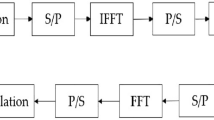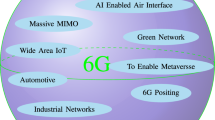Abstract
Basically, wireless microwave power transfer system has very low power delivery efficiency and this efficiency gets extremely lower as the longer range and higher center frequency. Also, there is no room for the power control of the transmitter in the power supply station in order to keep the wireless power transfer efficiency. So, maximum power must be always transmitted. The time division multiple access (TMDA) system of the wireless microwave power transmission (MPT) is used for the multiple power receiver users. In this paper, an efficient wireless MPT system supporting multiple users power receiver that is a flexible TDMA is proposed based on the power pilot that is the power request signal including the power receiver ID (identification) number and power level status information. That is, this power pilot has the authorized user information and the user's power status information, which is transmitted to the power station for the request of power transmission. The power supply station receives the power pilots from all users. For the user identification of the multiple users, a CDMA system is used in this propose system. Next, the power station recognizes the users power level status and control the order of the power transmission sequence. The lowest power level user receives the wireless power in the first order for the longest time. On the contrarily, the power station transmits the wireless power to the user of the highest power state in the last for the shortest time. So, depending on the power level status of each individual user, the microwave power transmission (MPT) time is assigned and rearranged, which decides the power charge time in user power receiver side. This is a newly suggested flexible time division multiple access (TDMA) MPT system, which allocates power charging time differently to each user, depending on the power level status. This is very meaningful in that power transmission to multiple users is performed according to the power priority. Also, this technology can be extended into multi-user simultaneous transmission system and beamforming technology is also adopted to increase the power transmission efficiency. The phase locked loop (PLL) based retro-directive array (RDA) system is used to each user arrival angle and store the direction information which is used again to send the power to that user. These systems are designed and their performance is verified through the simulations to build and assess the microwave wireless power transmission system that supports multiple users.










Similar content being viewed by others
Data Availability
Research data are not shared.
References
Bi, S., Ho, C. K., & Zhang, R. (2015). Wireless powered communication: Opportunities and challenges. IEEE Communications Magazine, 53(4), 117–125.
Dai, L., Wang, B., Yuan, Y., Han, S., Chih-Lin, I., & Wang, Z. (2015). Non-orthogonal multiple access for 5G: Solutions, challenges, opportunities, and future research trends. IEEE Communications Magazine, 53(9), 74–81.
Zhou, X., Zhang, R., & Ho, C. K. (2013). Wireless information and power transfer: Architecture design and rate–energy tradeoff. IEEE Transactions on Communications, 61(11), 4754–4767.
Shinohara, N. (2010). Beam efficiency of wireless power transmission via radio waves from short range to long range. Journal of Electromagnetic Engineering and Science, 10(4), 224–230.
Ng, D. W. K., Lo, E. S., & Schober, R. (2013). Wireless information and power transfer: Energy efficiency optimization in OFDMA systems. IEEE Transactions on Wireless Communications, 12(12), 6352–6370.
Zeng, Y., Clerckx, B., & Zhang, R. (2017). Communications and signal design for wireless power transmission. IEEE Transactions on Communications, 65(5), 2264–2290.
Kim, S., Kim, J., Kim, J., Kim, G., Yu, J. (2019). Retro-directive array antenna with parabolic shape structure for short-range microwave power transfer. In 2019 IEEE International symposium on antennas and propagation and USNC-URSI radio science meeting, Atlanta, GA, USA (pp. 1799–1800).
Kim, Y.-J., Ha, D., Chappell, W. J., & Irazoqui, P. P. (2016). Selective wireless power transfer for smart power distribution in a miniature-sized multiple-receiver system. IEEE Transactions on Industrial Electronics, 63(3), 1853–1862.
Miyamoto, R. Y., & Itoh, T. (2002). Retrodirctive arrays for wireless communications. IEEE Microwave Magazine, 3(1), 71–79.
Tech. Spec. Group Radio Access Network, “Study on New Radio (NR) Access Technology; Physical Layer Aspects,” Rel. 14, Sept. 2017.
Choi, K. W., Kim, D. I., & Chung, M. Y. (2017). Received power-based channel estimation for energy beamforming in multiple-antenna RF energy transfer system. IEEE Transactions on Signal Processing, 65(6), 1461–1476.
Kim, G., Boo, S., Kim, S., & Lee, B. (2018). Control of power distribution for multiple receivers in SIMO wireless power transfer system. Journal of Electromagnetic Engineering and Science, 18(4), 221–230.
An, C., Kwon, H. M., Ryu, H.-G. (2021). Lowest-in first-service system for the efficient MPT (microwave power transfer) to multiple receivers. In International conference on information networking (ICOIN), 13–16 January 2021, Jeju Island, Korea (South).
Acknowledgements
This work was supported by the National Research Foundation of Korea (NRF) grant funded by the Korea government (Ministry of Education) (NRF-2016R1D1A1B01008046) and this work was supported under the framework of international cooperation program managed by the National Research Foundation of Korea (2020K2A9A2A08000106). Also, this work was supported under the framework of international cooperation program managed by the National Research Foundation of Korea (2019K1A3A1A39102995).
Funding
National Research Foundation of Korea 2016R1D1A1B01008046, 2020K2A9A2A08000106, 2019K1A3A1A39102995 Heung-Gyoon Ryu.
Author information
Authors and Affiliations
Corresponding author
Ethics declarations
Conflict of interest
The authors have not disclosed any conflict of interests.
Additional information
Publisher's Note
Springer Nature remains neutral with regard to jurisdictional claims in published maps and institutional affiliations.
Rights and permissions
About this article
Cite this article
Kim, D., Ryu, HG. Flexible TDMA System for the Efficient Microwave Power Transmission to Multiple Power Receiver. Wireless Pers Commun 125, 3393–3403 (2022). https://doi.org/10.1007/s11277-022-09716-9
Accepted:
Published:
Issue Date:
DOI: https://doi.org/10.1007/s11277-022-09716-9




